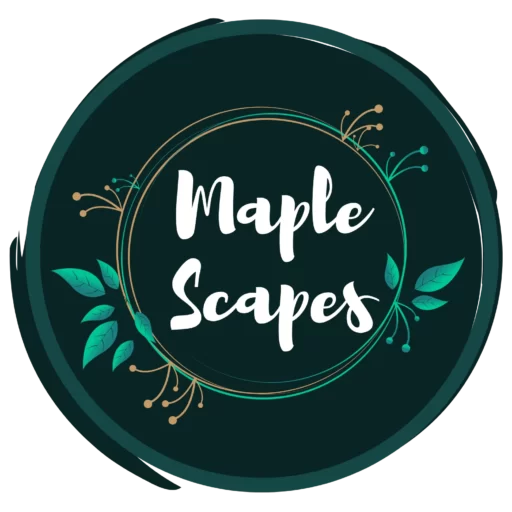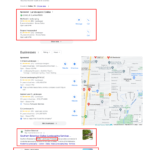Dreaming about transforming Montana yards into stunning outdoor spaces? Starting a landscaping business in the Big Sky State can be exciting, but before you bring on the mulch or plant the last tree, you’ll want to get the legal steps sorted.
While Montana doesn’t require a state landscaper license, applying pesticides or selling plants means you’ll need certain certifications, licenses, and registrations.
This guide breaks down the licenses required, their costs, and the application process, so you can start your business on the right foot.
Licensing Requirements for Starting a Landscaping Business in Montana
a. Landscaping Business
i. Landscape Contractor License
Montana does not require a state-level landscaping contractor license for general lawn care or planting. But if your business includes landscape architecture services, such as planning and designing gardens or hardscapes, you may need to be licensed as a Landscape Architect via the Board of Architects and Landscape Architects. That’s a separate professional license, not a general landscaper license .
ii. License Levels by Project Size
There’s no statewide tiered licensing by square footage like in Arkansas. Most regulations are handled locally, so check with your local county for project permits or zoning rules.
iii. Subcontractors
If you work under a licensed general contractor or architect, you may not need your own license, but follow any local building, plumbing, or irrigation permit rules.
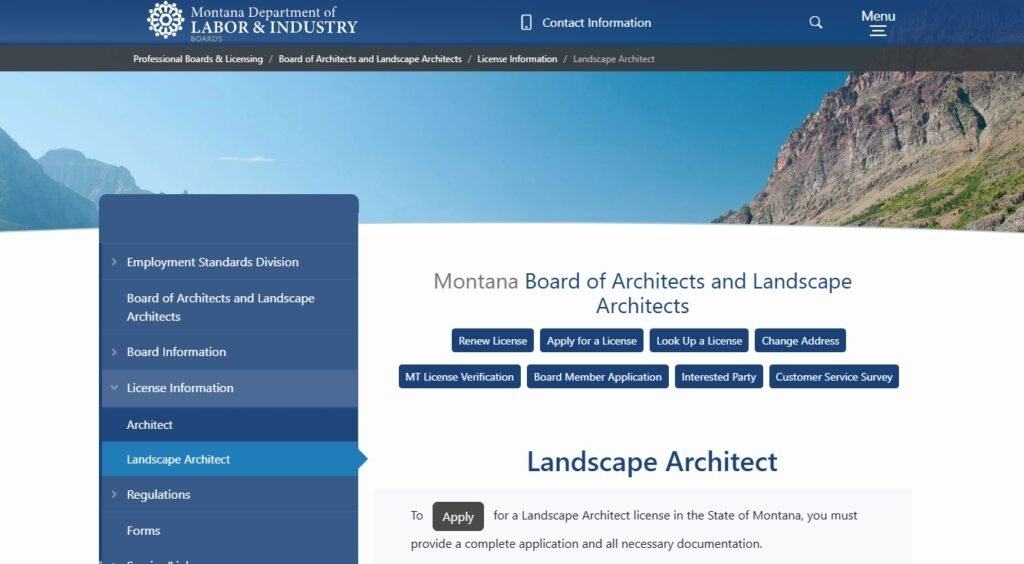
You can get a Contractor License by visiting the Montana Board of Architects & Landscape Architects (for professional landscape architect licensing).
b. Pest Control
Are you handling any herbicides, fungicides, or pesticides? You’ll need a Commercial Pesticide Applicator License from the Montana Department of Agriculture (MDA)
i. How to Qualify
-Pass a core exam and need a minimum of one category-specific exam (e.g., turf and ornamental) with equal to or more than 80% .
- Provide proof of liability insurance or financial responsibility
- Minimum $30,000 general liability for non‑aerial applicators
- $50,000 minimum for aerial applicators .
- Submit a completed application and pay related fees.
ii. Fees & Renewal
- Base license: $85/year
- $25 per operator for the first two operators, then $10 per additional operator .
- License expires each year on December 31 and must be renewed annually before applying for any pesticides .
iii. Recordkeeping
Must keep pesticide use records for two years: include applicator names, location treated, product details, date, rate used, weeds controlled, etc.
iv. Operators & Reciprocity
Employees applying pesticides under supervision must each hold a separate operator license—pass exam, training, or certification by a professional applicator.
Applicable applicants from other states may gain reciprocity, but must still pass the Montana law/regulation exam.
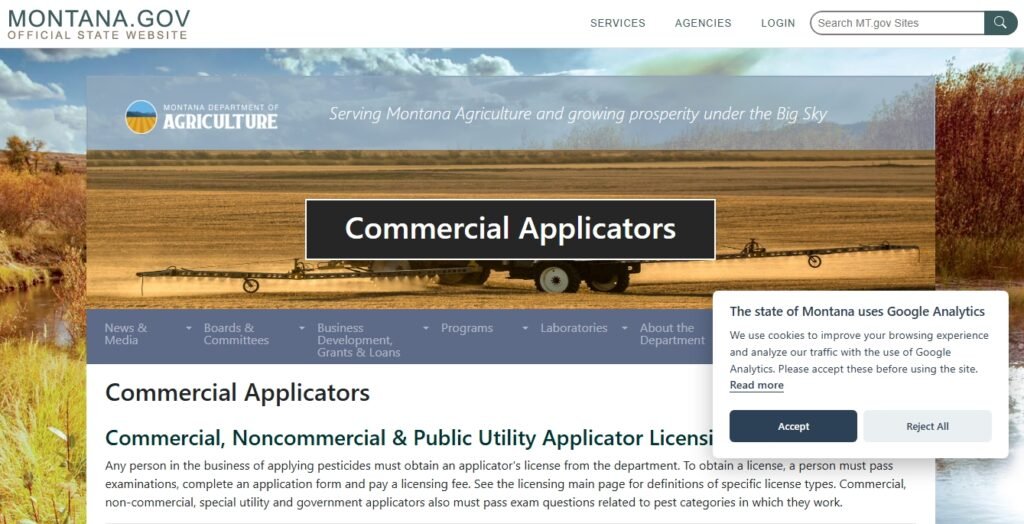
You may visit the Commercial Applicators website to get more information about the license.
c. Nursery Dealer or Landscape Service Licensing
If you sell or distribute nursery stock in Montana like plants, trees, or shrubs, you must hold a Nursery Dealer or Landscape Service license from MDA .
i. Landscape Service License
For businesses selling installed plants or nursery stock as part of services (e.g., garden planting), you need the Landscape Service license. Fees are $150–$200, depending on business scope .
ii. Nursery Dealer License
If you resell plants you purchase (versus install them), the Nursery Dealer license is required. Fees follow a tier based on gross annual sales:
- ≤ $5,000 = $25
- $5,001–75,000 = $135
- $75,001–150,000 = $200
- $150,001–250,000 = $300
- > $250,000 = $400 .
Note: You’ll need to renew the license annually. Around $25 is the compensation fee in case of missed renewals.

You may visit the official website of Justia US Law for getting more information regarding the license. OR you can also visit the official website of Montana.
d. Other Requirements
i. Surety Bond
While Montana doesn’t require a bond for general landscaping, if pesticide licensing or certain local contractor permits require financial responsibility, you may need a surety bond akin to insurance coverage (especially aerial applicators or firms selling pesticides).
ii. Insurance
Commercial pesticide applicators must carry at least $30,000 in liability coverage, $50,000 if aerial.
Even if not mandated, carrying business liability coverage of around:
- $100,000 bodily injury,
- $50,000 property damage,
- $5,000 Medical payments are wise, especially for client contracts.
iii. Business Registration
- Choose your business type (sole proprietor, LLC, partnership, etc.).
- Register on the Montana Secretary of State and get a state business identity.
- Apply for an Employer Identification Number if hiring or collecting tax.
- No statewide landscaper business license exists, but local cities may require business licensure.
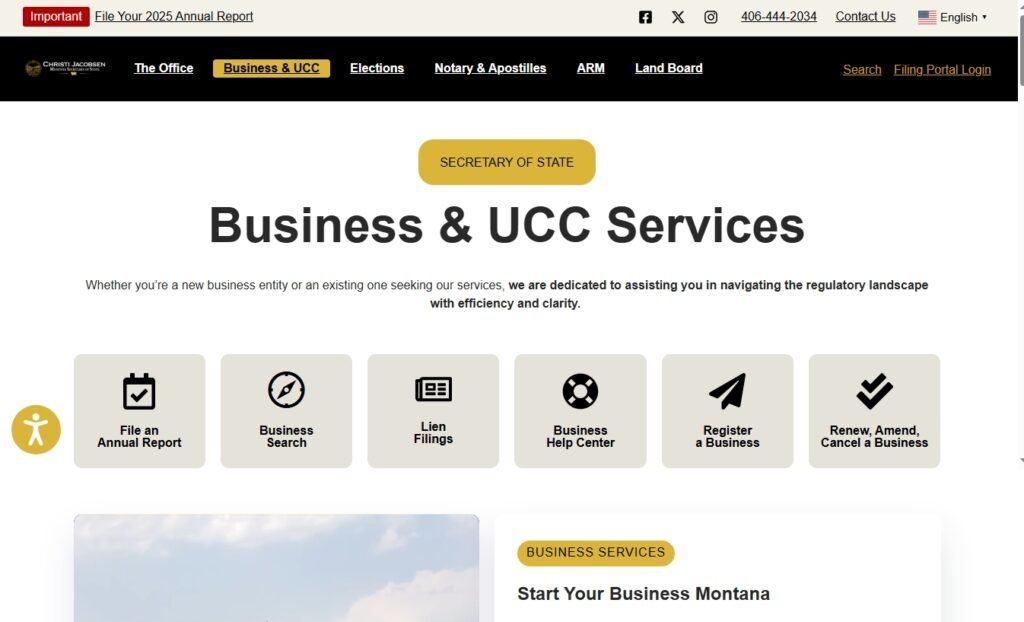
You may visit the official website of Montana Secretary of State for officially registering your business in Montana.
Landscaping Associations in Montana

If you’d like support, training, or industry connections, consider joining the Montana Nursery & Landscape Association (MNLA):
- Offers events, continuing education, and helps with licensing questions.
- Geared toward nurseries, landscapers, and garden centers.
- Membership provides access to equipment, connections, and advocacy .
Notes & Tips for Beginners
Here’s a checklist before launching your landscaping business:
- Montana doesn’t require a statewide landscaper license to check local city/county codes for permit needs.
- Obtain a Commercial Pesticide Applicator License if you apply herbicides or pesticides.
- Ensure each employee is licensed as an operator, if applicable.
- Get a Nursery Dealer or Landscape Service license if selling plants.
- Carry proper insurance or financial coverage.
- Register your business with the state and county.
- Join MNLA for support, updates, and industry events.
Typical license costs range from $85 for a pesticide cert to $150–$200 for nursery or landscape service licenses. Application processing can take 2–4 weeks, depending on the agency.
